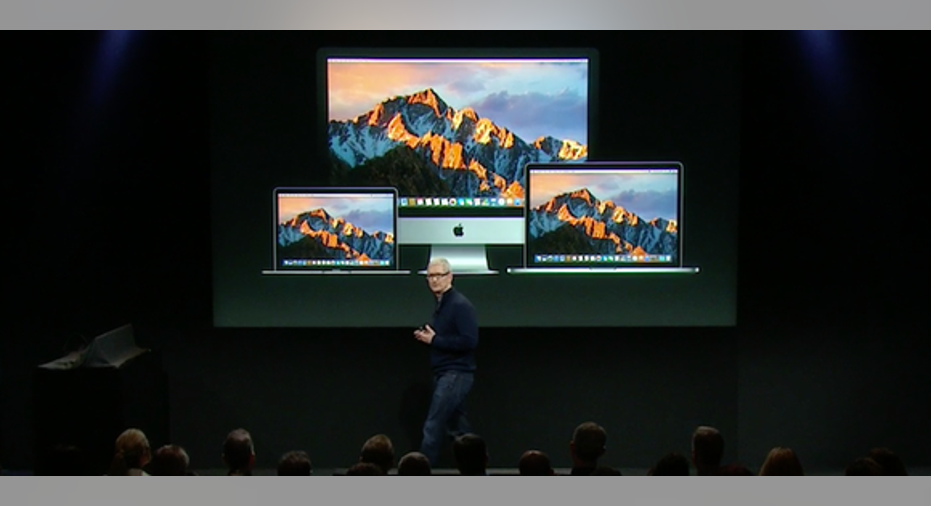Apple, Inc.'s Capital Returns Have Struck The Right Balance

CEO Tim Cook introducing new Macs at the October event. Image source: Apple.
I'm on record as being a huge fan of Apple's (NASDAQ: AAPL) capital return program. Not only is the program highly accretive to earnings due to its sheer size, but it also improves certain performance metrics such as return on assets (ROA) and return on equity (ROE) by reducing the denominators in those equations. Prior to the program's implementation, Apple truly had accumulated far too much cash on the balance sheet that was doing absolutely nothing, and CEO Tim Cook finally addressed long-standing criticisms around capital efficiency by starting to give it back to shareholders.
But at the same time, you also don't want to give too much back. Apple has found the right balance on how much capital to return.
How much is too much?
Free cash flow is already an important metric for investors to watch, particularly any company that has meaningful manufacturing operations. Even if the labor is outsourced to contract manufacturers, like it is in Apple's case, the company still has to spend heavily on infrastructure and tooling equipment. To determine the cash that Apple pays for capital expenditures, you add up two line items on the cash flow statement: payments for property, plant, and equipment (PP&E) and payments for intangible assets. Once you subtract this total from operating cash flow, you get free cash flow.
Data source: SEC filings. Fiscal years shown. Chart by author.
In the context of capital returns, dividends and share repurchases inevitably come out of free cash flow, and free cash flow is necessary to support ongoing investments needed to sustain the business. This why it's useful to compare capital returns to free cash flow.
Data source: SEC filings. Fiscal years shown. Chart by author.
It should be intuitively obvious that returning greater than 100% of free cash flow is unsustainable in the long run (Apple actually did this in fiscal 2014, returning 112% of free cash flow). The good news is that in the two fiscal years since, Apple has brought this percentage down to a more sustainable level. Apple returned 67% of free cash flow in fiscal 2015, and 80% of free cash flow in fiscal 2016. A comfortable level is anywhere in the 70% to 80% range.
Of course, these are based on consolidated financial results, and Apple funds the majority of its capital return program with debt issuances that aren't tied directly to operating cash flow or free cash flow. So it's worth acknowledging that the company's capital return program is also a function of its ability to continue raising debt (Apple now has nearly $80 billion in long-term debt), unless there's a tax repatriation holiday that allows some of that money mountain to come back to the U.S.
What to expect when you're expecting a capital return update next April
This also helps investors know what to expect in April, when Apple gives its annual update to its capital return program. For instance, here's how Apple has boosted its share repurchase authorization since 2013.
|
Year |
Increase in Buyback Authorization |
|---|---|
|
2013 |
$50 billion |
|
2014 |
$30 billion |
|
2015 |
$50 billion |
|
2016 |
$35 billion |
Data source: SEC filings.
Since operating cash flow, and thus free cash flow, declined in fiscal 2016 and is unlikely to unexpectedly soar in fiscal 2017, I wouldn't expect another massive increase in the share repurchase authorization this coming April. As of right now, Apple has approximately $40 billion remaining on the current authorization, and has been buying back an average of $7.4 billion of shares per quarter over the past year.
So by the time April rolls around, Apple should still have a decent amount of authorization remaining, so I would expect it to lean toward the conservative side of its historical increases.
A secret billion-dollar stock opportunity The world's biggest tech company forgot to show you something, but a few Wall Street analysts and the Fool didn't miss a beat: There's a small company that's powering their brand-new gadgets and the coming revolution in technology. And we think its stock price has nearly unlimited room to run for early in-the-know investors! To be one of them, just click here.
Evan Niu, CFA owns shares of Apple. The Motley Fool owns shares of and recommends Apple. The Motley Fool has the following options: long January 2018 $90 calls on Apple and short January 2018 $95 calls on Apple. Try any of our Foolish newsletter services free for 30 days. We Fools may not all hold the same opinions, but we all believe that considering a diverse range of insights makes us better investors. The Motley Fool has a disclosure policy.